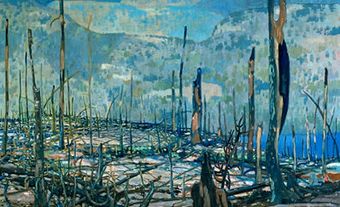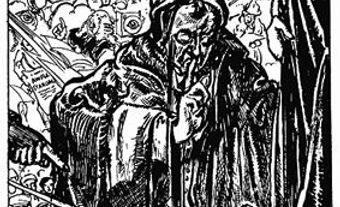Education and Early Career
Jackson’s early art training was partly on the job (he worked at various lithography firms in Montréal between 1895 and 1906 and in Chicago from 1906 to 1907) and partly at night schools, including the Conseil des arts et manufactures in Montréal (1896-99) under Edmond Dyonnet and at the Chicago Art Institute (1906-07). Anxious to become a painter rather than a commercial artist,
Soon after his return to Montréal,
The Great War and the Group of Seven
In 1915, after the outbreak of First World War, Jackson enlisted in the army and was sent to
Back in
All his life
Other Activities
In 1933,

 Share on Facebook
Share on Facebook Share on X
Share on X Share by Email
Share by Email Share on Google Classroom
Share on Google Classroom






